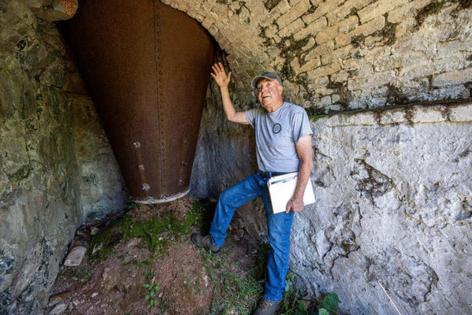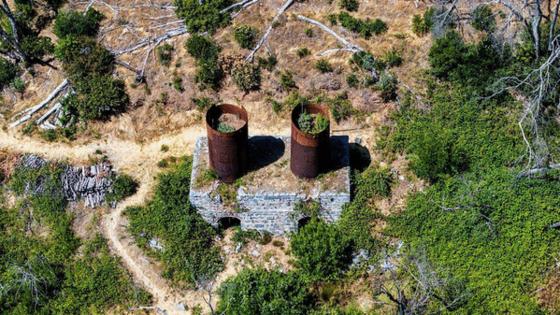California fire revealed hidden history. Now, it's a landmark
Published in News & Features
Late 19th-century and early 20th-century historical monuments, representative of California’s early development, once hid under a dense Placer County forest.
The monuments, a 60-foot lime kiln and quarry, could not be accessed by the public for about a century. But both emerged when the River Complex fire burned through thick blackberry brambles, vines and trees near Colfax. A quarry, famed for its black limestone, was also discovered a few feet away from the kiln on private property after flames on Aug. 4, 2021 burned through 2,619 acres.
“The site was almost lost to time,” said Joe Plumley, an assistant planner with Placer County.
On Tuesday, the Placer County Board of Supervisors unanimously adopted an ordinance appointing the Colfax Lime Kiln and the Pritchard Quarry to the county’s official register of cultural and historic resources. The lime kiln serves as one of California’s best preserved kilns in Placer County and is the third property to land on the county’s historic designation, Plumely said.
“This is a milestone,” said Jim Wood, a board member with the Colfax Lime Kiln Preserve. The nonprofit has been working for several months to have the site recognized.
Workers began operating the quarry in 1867 and mined rocks built into the state Capitol and the U.S. Mint building in San Francisco. Extracted limestone swept through the state, with 300 tons of rock transported to San Francisco in 1874, though the quarry’s activity ceased in the late 1800s, Plumley said.
Entrepreneur Henry Thomas Holmes, owner of H.T. Holmes’ company, bought land near the quarry and built the Colfax Lime Kiln in 1903.
A kiln heats limestone and helps to process it for construction, fertilizer and other uses. The site also includes an electric aerial tramway to lift processed limestone to a higher elevation for transportation to Nevada and Oregon, Wood said.
The population boom after the Gold Rush led to an increasing need for limestone to build homes and buildings. However, the lime kiln was abandoned in 1910 after cement reduced demand for limestone, Wood said.
Tuesday’s vote allows the nonprofit Colfax Lime Kiln Preserve to apply for grants and move forward with next steps to help transform the area. Board members of the nonprofit offer guided tours on the site. The property owner is anxious to see this site developed and seeks to hasten the process, Wood said.
The nonprofit also hopes to raise money and make a formal trail, compliant with the Americans with Disabilities Act, to welcome the public to the site, Wood said. Recreational activities serve as an vital part of Placer County’s tourism economy, and Wood hopes the historical site can one day be on a list of important destinations.
“We are really leaving a legacy,” said Supervisor Cindy Gustafson.
_____
©2025 The Sacramento Bee. Visit sacbee.com. Distributed by Tribune Content Agency, LLC.










Comments